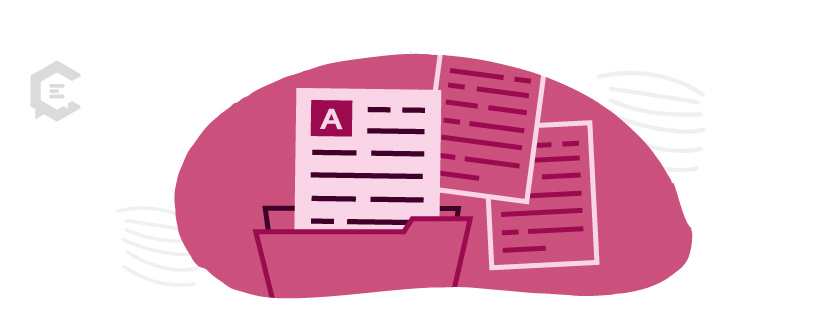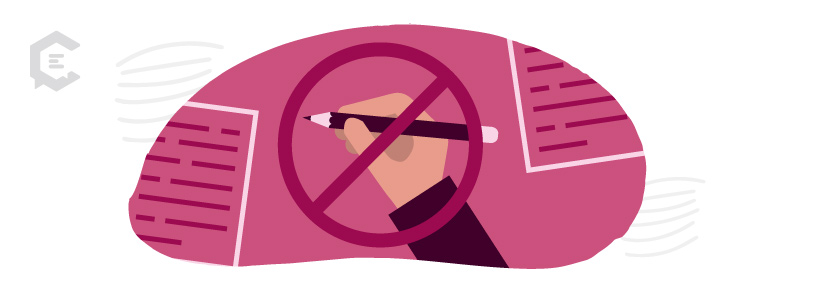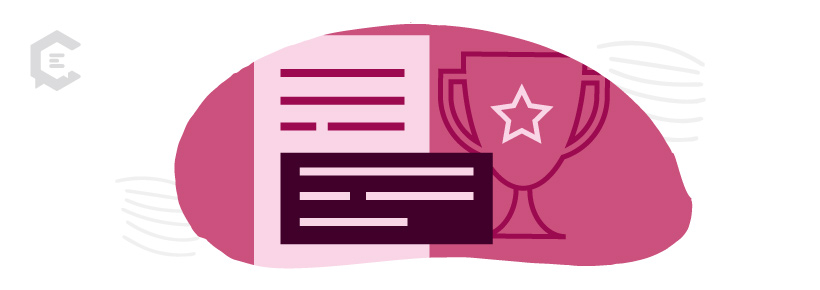What is a boilerplate? A boilerplate sums up the compelling story for a brand in a clear, standby description that can be easily included in corporate communications. Somewhere between an elevator pitch and a condensed version of an “About Us” page, the boilerplate copy should highlight a brand’s mission, history, and current outlook.
It’s ideally short, sweet and to the point — one of the most important components of written brand identity material, although often used as a scornful synonym for “generic’” or “legalese.” I’m talking about boilerplate — the condensed version of the “About Us” backgrounder or mission statement. This marketing nugget is a standby brand description that has been approved by all people up the chain and can be plugged into press releases, investor pitches, partnership proposals, and many other purposes. It can be used for web and print. It should be one tight, information-packed paragraph that sums up the highlights of the company from its inception till right now.
It’s an essential piece of foundational copy. When brands are looking for someone to write their boilerplate, it can be a good indication they are in need of overall content, too.
Here are five tactics you want to utilize to craft top-notch boilerplate, plus five that you should avoid. We’ll also take a look at five written boilerplate examples that are used in a variety of different channels to create a memorable, consistent brand identity.
How to write boilerplate copy: Top 5 do’s
1. Do collect all the previously written background materials about the brand and study them meticulously.
Keep track of the key messaging points and company milestones that are repeated most frequently in all the current or most recently released materials. In many cases, you don’t write boilerplate from scratch. Your job is to collect the most important and relevant points that have already been approved, check to make sure they’re all up to date, add any important new information, and package all of it up concisely.
2. Do include the tagline.
Many content strategists open or close the boilerplate with the company tagline — even if you don’t do this, you definitely need to work it in somewhere. Also, use specific keywords that you want this brand to own. Weave keywords cleverly into the rest of the text, so the boilerplate doesn’t read like a list or a keyword cluster.
3. Do make sure you’re sticking with one perspective/POV.
Choose the point of view according to the placement and intended audience. “We” can be used on a mission statement online, and on a company bio if you’re going for a casual tone. Occasionally first-person singular works if the brand is strongly associated with a sole founder. Third-person is the most common POV for all written brand materials and definitely works better for the boilerplate at the bottom of a press release since those often get sent to hundreds of places and/or posted online.
4. Do go over your boilerplate with a meticulous eye to make sure you’re using the most up-to-date terminology and information.
Of course, the most important thing is ensuring your client’s information is up-to-date and reflects the latest messaging points, but there are other things to look at in microscopic detail. Make sure you’re not switching POVs or muddling tenses (more on this below). Then if you want your boilerplate to pass the next level of scrutiny, review that you’re not using dated or potentially offensive terminology.
5. Do include website, social media handles, and stock symbols (if applicable).
These should go at the very end of the boilerplate, and web/social details typically are plugged into a CTA: For more information, go to clearvoice.com or follow us @ClearVoice on Twitter and LinkedIn.
How to write boilerplate copy: Top 5 don’ts
1. Don’t stuff the boilerplate with jargon.
This approach is certainly a temptation since jargon is such a crutch in marketing communication, especially in B2B communications. One almost begins to believe that in order to be credible and impressive, a professional statement needs to be written in “marketing speak.” However, this is a public-facing piece of content, or will be repurposed for that — and as such, needs to be easily understandable, direct, and clear in describing a company’s purpose and roots.
2. Don’t exaggerate or make claims that you can’t prove.
Small upstart companies and enormous multinationals are both likely to do this — for example, claiming “first,” “biggest” or “unique” in-category status without doing due diligence to make sure the statement is 100% accurate. The more you use the boilerplate, or spin it off into other brand identity materials, the more likely someone’s going to spot a statement and ask you to prove it. Even if you’re Subway or McDonald’s (see example below).
3. Don’t let this copy become too long.
Even large and dynamic companies figure out how to fit their mission statement, tagline, significant milestones, and contact into a few sentences — for reference, look at our examples further along in this post. If billion-dollar companies can keep their boilerplate under two paragraphs, so can your client.
4. Don’t switch your POV from first to third person…
…and likewise, don’t change tenses or narration style mid-flow. When boilerplate is revised quickly by different persons over a period of time and not copy-edited, you can wind up with a mishmash of different narratives. This looks sloppy when a person’s studying it closely. Make sure everything matches and is current.
5. Don’t let a CEO or founder be the last person to make changes to boilerplate if you can help it.
They’re so caught up in trying to achieve perfect messaging, that they never look out for the typos that they almost certainly cause in their copying-pasting-deleting-moving-around of words and sentences. Even if they say “This version is perfect!” make sure and proofread it before it becomes the official company boilerplate.
5 examples of good boilerplate copy
1. WeWork
It modernized the remote work trend, raised billions in capital, inspired a dozen copycats, and just went through a rebrand – but nonetheless, WeWork keeps its boilerplate to one quick paragraph for professional directory sites. On the “Company Info” page for press/media, this copy is split between several headers to appear even briefer and punchier.
2. Subway
Although global sandwich chain Subway has suffered some losses to its market share recently, it’s still claiming the status of “world’s largest restaurant chain,” having recently overtaken McDonald’s — and its boilerplate reinforces that positioning in every trade article, CSR announcement and newswire blast generated by its comms team. Although you can’t easily find the boilerplate in the “About Us” section, it appears at the bottom of every press release posted in the online pressroom.
3. Fundbox
Software as a service, or SaaS for short, is a broad, growing, and lucrative vertical, but there’s often some difficulty in explaining what your product does — especially in elevator pitch format. Fundbox, a startup that exists in the somewhat crowded SMB (small and medium-sized businesses) financial services space, has a mission statement that’s written strategically in third-person with easily understandable phrasing.
While it touches upon technology and data science, it focuses more on the benefits it provides to users, and the long-term outcome it hopes to provide for small business owners. It winds up strong with a list of Silicon Valley power players that have invested. Interestingly, the boilerplate that is on press releases is not in the “About Us” section but used as a header on the Careers page — suggesting that Fundbox wants to attract talent who read and believe in its core messages.
4. Tervis Tumbler Company
When your product is in thousands of retail stores, a company doesn’t need to build its brand recognition from its online and social media messaging. Instead, branding materials summarize its back story and current footprint for people who are vaguely familiar but who want to know a bit more about it.
Tervis Tumbler Company has been around for more than seven decades and has released so many official licensed collections with iconic entertainment brands, from Disney to the NFL to Dr. Seuss to Hallmark. It has a few versions of boilerplate, which are likely swapped out depending on the need, but all versions hit on the products’ lifetime guarantee, double-wall insulation, American-made status, and wide range of colorful styles.
5. The Asian Art Museum
Cultural institutions need boilerplate as much as any other kind of business — and the text gets a great deal of usage since it wraps up all the press releases and calendar listings that must be distributed to announce programming in the venue. The Asian Art Museum boilerplate used for press releases is also distributed to event calendars, travel guides, and even audio guides so that potential visitors from near and far can easily get basic details on this rather niche San Francisco art museum.
Boost Your Boilerplate and Brand
Now that you’ve gotten a detailed breakdown of boilerplates with some examples, your brand’s messaging will be shining in no time. If you want to take your brand’s messaging a step further, ClearVoice is here. Our expert teams and content solutions can help you produce eye-catching brand messaging that will boost your visibility and drive engagement. Talk to us today to get started.







